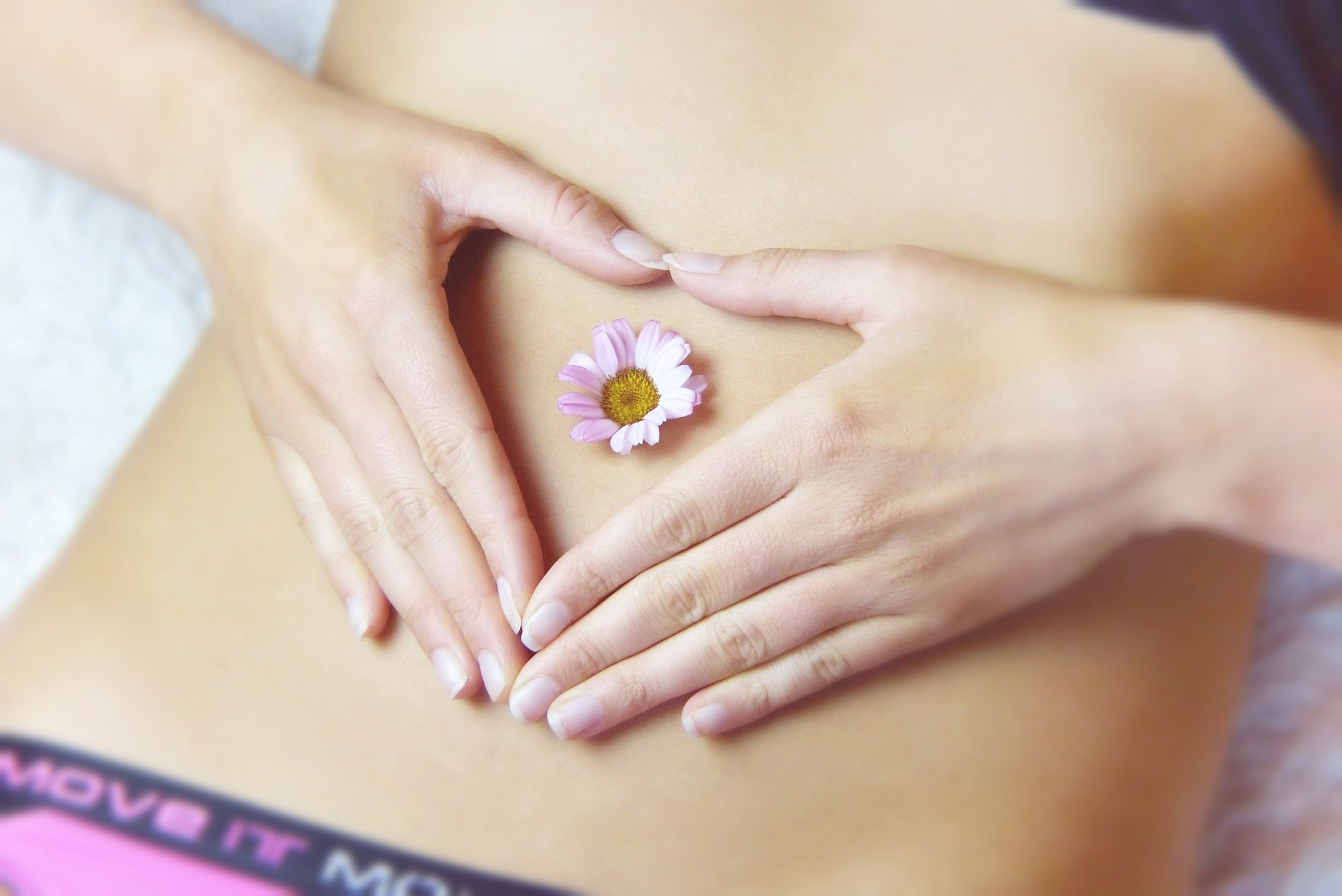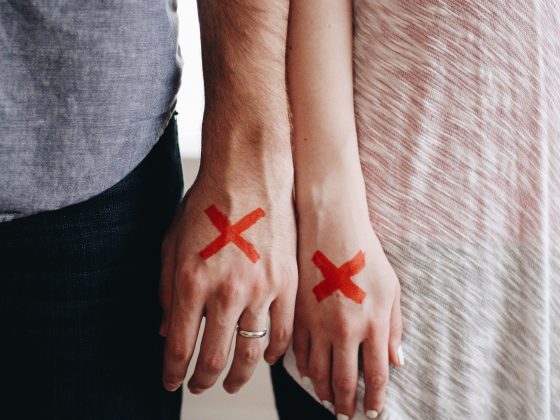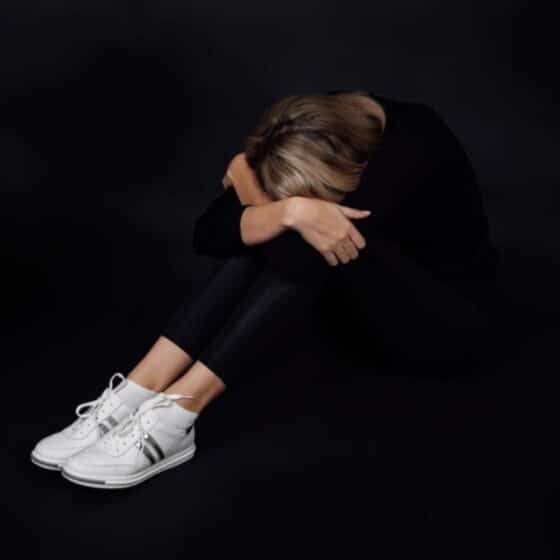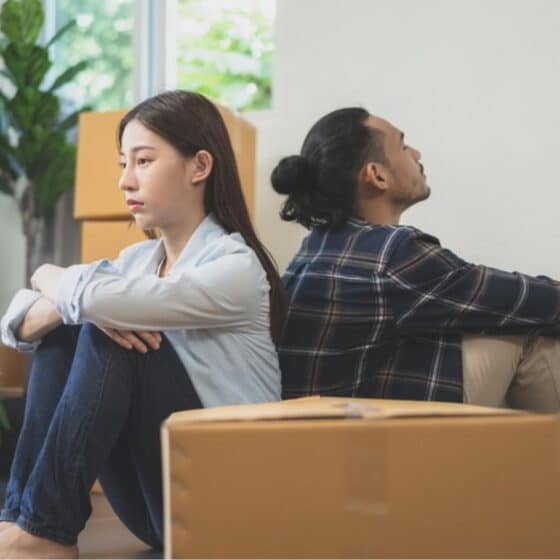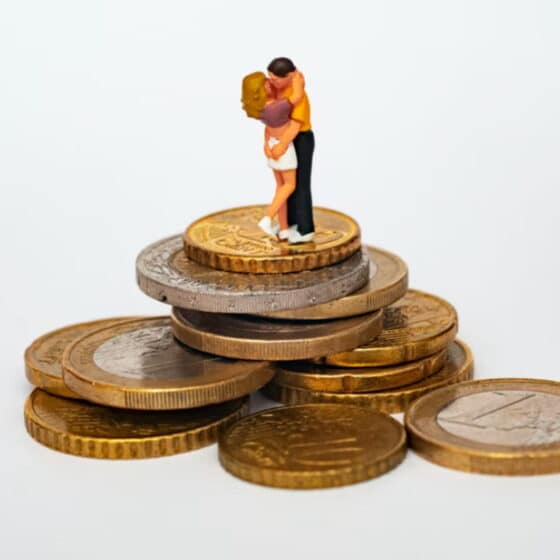Period cramps can be one of the most annoying and painful things to deal with. Even though we’re not licensed doctors, we believe you deserve a way to alleviate your pain.
With thorough research, you too can find a way to make that time of the month more pleasant. That’s why we’ve decided to share with you some basic information about periods, the general causes of cramps, as well as several tips on how to get rid of cramps.
Why Do Cramps Happen?
Menstrual cycles may all be different, but how they happen remains the same. During your period, your uterus constantly contracts to get rid of the lining. These contractions are triggered by prostaglandins. The higher their levels, the more pain you’re likely to experience.
Painful periods can also happen for a variety of other issues. Any woman can be at risk of suffering severe cramps, especially if she’s younger than thirty, entered puberty early, bleeds heavily, or has an irregular cycle. This is because your hormone levels change throughout your cycle and throughout your life.
Phases of the Uterine Cycle
To learn how to predict your cramps, you first need to understand your cycle better. The menstrual cycle happens in several phases.
Menstruation
The first day of your cycle is the day you start bleeding, and the last day is when your next period begins. Your estrogen and progesterone levels are low. The uterine lining starts shedding, which causes the bleeding.
Follicular Phase
This phase also starts on the first day of your period but ends with the start of ovulation. During this stage, the eggs contained within ovarian follicles mature, hence the name. One of the eggs is then prepared to be released during ovulation. As a result, the uterine lining thickens so it can provide nutrients to a potentially fertilized egg.
Ovulation
This phase refers to the process of releasing an egg from the ovary. It usually happens mid-cycle and is characterized as the peak of estrogen levels.
Luteal Phase
In this part of the ovarian cycle, your body prepares for a possible pregnancy. It happens right after ovulation and lasts until you get your period. During this phase, progesterone levels are at their highest.
Secretory Phase
Briefly put, here’s what happens: In preparation for either pregnancy or your next period, the reproductive system will support the uterine lining by producing progesterone. If fertilization doesn’t occur, the uterine lining sheds. So, menstruation is triggered by a drop in the levels of progesterone, whose production decreases since there’s no pregnancy.
Types of Cramps
Although they’re usually said to be a PMS symptom which means your period’s on its way, there are actually several types of cramps and not all of them mean you’re about to bleed.
Primary Dysmenorrhea
The first type of cramps is called primary dysmenorrhea and they occur in the form of lower abdominal pain. They aren’t triggered by any underlying issues—they happen right before and during menstruating.
Primary dysmenorrhea shouldn’t be confused with premenstrual syndrome. PMS leads to different physical and emotional symptoms like fatigue and irritability, bloating, weight changes, etc. During it, you may also experience cramps without a period. If they’re very painful, it could be due to high levels of prostaglandins.
Secondary Dysmenorrhea
This type is caused by underlying reproductive issues. The most common reason for such cramps are:
- Fibroids—benign tumors that can be found inside the uterus. Some women also experience ovarian fibroids. They’re made of muscle and tissue and are usually asymptomatic. It’s said that fibroids are affected by sex hormones.
- Endometriosis—a condition can be quite painful and difficult to diagnose. It occurs when the cells lining the uterus are found in different areas of the body, most commonly the pelvis. They behave differently than in the uterus, though, which is why they cause so much pain.
- Adenomyosis—perhaps the most difficult issue on this list to treat. Adenomyosis is caused by endometrial cells that grow in the muscle levels of the uterus.
If you believe you may be suffering from secondary dysmenorrhea, it’s best to talk to your doctor. Extremely painful periods which interfere with the course of your daily life aren’t normal.
Implantation Cramps
Though these cramps may feel similar to period cramps, they’re an indicator of a fetus implanting into the uterus. They’re mild, feel more like pricking, tingling, or pulling, and are anatomically lower than your period cramps. Because they occur six to twelve days after ovulation, it can be hard to differentiate them from period cramps.
The best indicator could be implantation spotting, which is usually lighter than your period. Taking an at-home pregnancy test could also help you distinguish between period and implantation cramps. However, a test might not show the correct results if you take it before your period is at least a week late.
Ovulation Cramps
Some women suffer cramps during ovulation, and they might even bleed. The pain’s usually stronger on one side of the body. Spotting during ovulation (bleeding) is typically lighter than menstrual bleeding.
You can also tell you’re ovulating if there’s more vaginal discharge and it’s white/yellowish, sticky, and creamy. The pain and the bleeding should last no more than a couple of days.
Treatment of Primary Dysmenorrhea
Figuring out how to get rid of cramps is no easy task, especially if they’re severe. Here are some things you can do to ease your pain and manage it better.
Dietary Supplements
Sometimes, magnesium deficiency can contribute to periods becoming more painful. If you start taking a supplement, you might experience fewer cramps because the magnesium should help the muscles contract less. You can also get special dietary supplements aimed at calming your body down during that time of the month.
Light Exercise
During your period or PMS phase, the last thing you want to do is exercise. However, if you implement exercise into your schedule when your period ends, you may experience lighter cramps the next time around.
Painkillers
Pain-relief medications are available almost everywhere today, so you can look for period cramp medicine over the counter. It’s even wiser to consult your doctor, who can recommend painkillers most suitable for your needs.
Reducing Salt and Sugar Intake
Craving spicy and sugary treats when you’re about to get your period or already menstruating isn’t unusual. Although such cravings can be intense, satisfying them doesn’t necessarily mean you’re doing something good for your body. Instead of cutting such unhealthy foods out completely, try limiting the intake. It should have a beneficial effect on cramping.
Warmth
Whether you take a shower, bath, or use a heating pad for period cramps, it’s likely to help since the warmth should help alleviate the pain. You can bring your heating pad with you to bed, or even to work if you have to. If you’re opting for a warm shower, make sure it’s a long one.
Adopting a Comfortable Sleeping Position
Sometimes, period cramps can be so intense that they wake you up. The effects of sleep shouldn’t be ignored since lack of sleep can worsen your quality of life. That’s the last thing you need when cramps are already making it harder to get on with your daily/weekly routine.
Luckily, there are certain sleeping positions to help period cramps. The foetal position, for example, takes the pressure off of the abdominal muscles. You can also try lying on your back and gently massaging your stomach. Finally, you can curl your knees under you and place your head directly on the mattress.
Treatment of Secondary Dysmenorrhea
While the aforementioned treatments work for period and pre period cramping, they might not work if you’re experiencing cramps because of underlying issues. In fact, secondary dysmenorrhea is usually treated in other ways, depending on what the issue at hand is. In this case, treating those underlying issues and learning how to get rid of cramps is best done with medical professionals’ help.
- If you have fibroids, your doctor may require you to do an ultrasound and an MRI to locate the fibroids and learn more about them. Later on, women can undergo FUS (MRI-guided focused ultrasound surgery), which destroys fibroid tissue. You might also start taking medication to make the fibroids smaller before surgery. There’s also arterial embolization, where you’re injected with minuscule particles that block the blood supply to the fibroid.
- With adenomyosis, hormonal birth control can help ease menstrual pain and heavy periods. As medicine advances, more permanent treatments are likely to be expected. As of now, the only long-term solution is hysterectomy.
- In case of endometriosis, symptoms are alleviated with hormone therapy, endometriosis surgery, or a combination of both.
How Much Pain Is Too Much Pain?
When you complain about your cramps to people, the usual response you get is that it’s normal for periods to hurt. However, there’s a fine line between your body doing what it needs to do and your uterus interfering with every aspect of your life.
Signs to Watch out For
If you’re not sure about what your body’s telling you, here are some signs that might show you your cramps aren’t just normal period pain.
Disrupted Life
If you find yourself taking days off work each month, or are unable to do anything standing up even when you’re experiencing cramps without a period, consult your doctor.
Something Feels Wrong
Sadly, menstruation-related concerns are often dismissed or not taken seriously enough by doctors. However, if you recognize yourself in this article and have a strong feeling something isn’t right, keep searching for someone who will listen. Some secondary dysmenorrhea issues take a long time to properly diagnose, so you shouldn’t give up the first time you get shot down.
Irregular Pelvic Pain
You can expect some discomfort in your pelvic area just before you get your period and the first few days of it. However, pelvic pain during other cycle phases isn’t supposed to be there.
Pain Medication Isn’t Helping
Pills for cramps should help you feel at least a little better. If the meds don’t work, it’s not an invitation to take more than advised. It’s a clear sign of an underlying health problem.
Irregular Cycles
In teenagers, irregular cycles are considered to be those shorter than 21 and longer than 45 days. In adults, cycles outside of the 24–38-day range are considered irregular.
If the duration of your cycle varies considerably from month to month, that could indicate a problem. You should also talk to your doctor if you suddenly lose your period for more than three months (in cases excluding pregnancy, changes in birth control, and menopause).
Nausea or Diarrhea
When occurring together, menstrual cramps and nausea can be a symptom of secondary dysmenorrhea. While feeling sick can sometimes happen, it should be a cause of concern if it happens every time you menstruate.
Spotting
While it’s hard to differentiate between ovulation vs period bleeding, ovulation spotting shouldn’t last more than a couple of days, and should be very light in color. Bleeding in the middle of your cycle can be reason for concern if it’s not related to ovulation spotting and if it’s heavier and more painful than expected
Heavy Bleeding
It’s hard to tell how much blood is too much, since every person is different. However, heavy bleeding is commonly defined as losing more than 80ml of blood and bleeding for more than seven days.
Painful Intercourse
Painful penetration can be a big detriment to one’s sex life, so no—it isn’t and shouldn’t be normal. If you experience pain during sex often, talk to your doctor.
Conclusion
We hope we’ve succeeded at giving you truly helpful tips on how to get rid of cramps. Your life doesn’t have to be spent in pain just because you menstruate. Understanding your cycle and getting more in touch with your body will help you differentiate between what’s normal and what’s not.
P.S. If you’ve found our advice helpful and enjoy health/beauty-related topics, check out our tips on proper skin care, and much more!
